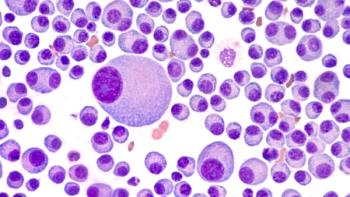
- May/June
- Volume 10
- Issue 3
Flipping the Script: The Complexities of the Health Care System and the Importance of Cancer Care Management
All stakeholders in the health care continuum should always remember that there is a person at the end of their businesses who depends on them to survive and have a high quality of life.
"You have cancer."
I was on the receiving end of this sentence in July 2018.
As a leader of a health care company focused on improving the outcomes of patients with chronic conditions, including cancer, I was not personally exposed to the pathway of someone navigating their own cancer care journey. These are 2 different pathways, to be sure. The health care continuum can often be overly focused on the individual tasks of care and less focused on aligning the multiple entities that provide this care to optimize outcomes and the entire patient journey.
Alignment is challenging enough within a single health care entity, much less between disparate companies with different goals, objectives, and incentives. Welcome to cancer care in 2019. There is hope, but many more challenges remain.
For heart ailments, a general practitioner and cardiac specialists develop a treatment plan and help the patient navigate their journey. For patients with cancer, there is a litany of providers to align. In my case, these providers included the general practitioner; the ear, nose, and throat specialist; the surgical oncologist; the chemotherapy oncologist; the radiation oncologist; the dental oncologist; the speech pathologist; and the physical therapist.
It’s a daunting task for anyone, and my experience as a health care professional actually didn’t help much. Combine this gaggle of specialists, each with their own medication protocols to follow, and you have yourself a very pretty mess. Did I mention the insurance company, the pharmacy benefit manager, and the banker are also firmly planted in the middle of these proceedings, often making the plight of the provider even more challenging, much less that of the patient?
The White Walkers
Our challenge with the future of cancer care will be with what I affectionately call the White Walkers, a reference from HBO’s Game of Thrones. Our health care continuum is so focused on all the noise in the system of health care provision that we have yet to focus on the calamity ahead. There are 4000 cancer immunotherapies in the pipeline as you read this. They are going to revolutionize cancer care and treatment around the globe. They also have the ability to fiscally crash the entire health care system if not managed correctly.
These drugs will be diagnosis specific and will surely be expensive. How are we going to manage the flow of these therapies into the marketplace? The introduction of the revolutionary hepatitis C antiviral treatments a few years back caused the entire payer community to have a complete meltdown. Now imagine 4000 of these therapies all hitting the market within a few years. Chaos will reign if we are not careful and prepared.
As I wrote in the May 2016 edition of Specialty Pharmacy Times®, equally troublesome are patient adherence rates to oral oncolytics, which currently comprise approximately 50% of oncology drugs in use and 25% of the pipeline. Overall adherence to oral oncolytics is in the neighborhood of 50%. There is evidence that suggests for some groups, adherence rates are much, much lower. I believe this is largely due to financial constraints, not the drugs’ adverse effects.
As long as immunotherapy requires infusion, the payment responsibility will remain on the medical side. This provides the opportunity for oncologists to keep close watch on patients. But oral immunotherapeutics will eventually enter the market, so then what? Until US health care policy makers assign a nationwide quality-adjusted life year value determination, we will continue to wade through a disjointed process by which access to and prices for specialty medications, including forthcoming immunotherapeutics, are determined.
Plan sponsors simply cannot finance exceptionally expensive, existing, and nascent cancer therapies. They will need to do a financial analysis of medical cost versus therapy spend. I was asked while presenting at a conference a few years back, “How are Medicaid patients going to get access to these immunotherapies?” I answered, “Medicaid patients are going to receive traditional therapy and/or die of cancer.”
Cruel, yes. Truthful, yes.
It will take years for the health care system to digest these revolutionary and costly therapies. It will be an interesting decade in the treatment of cancer. There are tremendous treatment opportunities but unresolved cost implications.
Reasons for Hope
The hope comes to us in the form of value-based care coupled with outcomes-based contracts and robust care management pro- grams. These cause the focus, and many times financial incen- tives, to become more aligned with the patient and their direct clinical outcomes. The questions that need to be answered are:
- Who is best placed to achieve better outcomes?
- Who will align the health care stakeholders around their patients?
- How do we align incentives around outcomes?
Plan sponsors will be more heavily involved in value-based agreements, pushing their carriers to engage pharmaceutical manufacturers for outcomes. Where is the money going? Are we spending it wisely? Plan sponsors’ requests are not likely to be supported by existing manufacturer resources. This is where specialty pharmacy and care management can affect adherence, gather clinical data, and serve as a centralized resource for responsible parties and value-based contract adjudication.
Given the relative infancy and small number of robust, outcomes-based contracts between pharmaceutical manufacturers and insurers, there are little data to analyze in terms of their efficacy. However, several opportunities and tools in care management make more out of scarce resources to improve outcomes and reduce overall cost in treatments for chronic conditions, including cancer.
Patient Advocacy, Education, and Counseling
Continuity of the person providing support is key here. An advocate to help providers get paid and help patients get on a noninfused treatment regimen, go home, manage their adverse effects, and help them understand why they need to go back to a particular practitioner is of very high value. Making those appointments and getting patients to them, accessing the right prescriptions, and supporting outstanding adherence are the core elements of a healthy chronic care management program, especially for cancer treatment.
A clinical team of 8 or more doctors is a shifting labyrinth from which there seems no safe exit or outcome. Patients need 1 phone number and 1 person for advocacy, and that person must work proactively for the patient. This is a big difference between case management and care management or clinical advocacy. If a care manager has to tell their patient they don’t know the answer to something, that care man- ager—not the patient—should make the next call to either the clinician or the payer.
Far from a call center experience, dedicated patient care coordinators who speak with the same patient on a frequent basis generate trusting relationships during the time that patient is not in the physician’s or oncologist’s office.
Gathering and archiving data, especially as they relate to lifestyle and barriers to adherence, can provide a level of understanding and the ability to influence adherence and outcomes for chronically ill patients in a way that no other member of the patient services or care management team.
Future Thinking
Leaders in specialty pharmacy would do well now to bolster patient outcomes and the capability to capture lab data. Outcomes and the patient journey are the centerpieces of an effective care continuum. Focusing on outcomes and the reimbursement surrounding those outcomes, instead of each pill or infusion drug, will increase the odds of success. One day, plan sponsors will drive these priorities and inevitably take outcomes-based control over access and investment in their members’ health.
As I travel down my own patient journey, I’m continually inspired by the devotion of my direct care team in helping me beat cancer. All stakeholders in the health care continuum should always remember that there is a person at the end of their businesses who depends on them to survive and have a high quality of life. We need to search for those pathways to bring all of us in the health care business together to focus on the outcomes of the patient first and foremost.
Articles in this issue
over 6 years ago
Specialty Pharmacy Takes Center Stage in Cancer Careover 6 years ago
Ovarian Cancer: The Silent Killerover 6 years ago
Nivestym by Pizer, Incover 6 years ago
Free Drug Starter Programs Are Not All Alikeover 6 years ago
How Does a Pharmacy Train Staff to Handle HDs?Newsletter
Stay informed on drug updates, treatment guidelines, and pharmacy practice trends—subscribe to Pharmacy Times for weekly clinical insights.

















































































































































































































